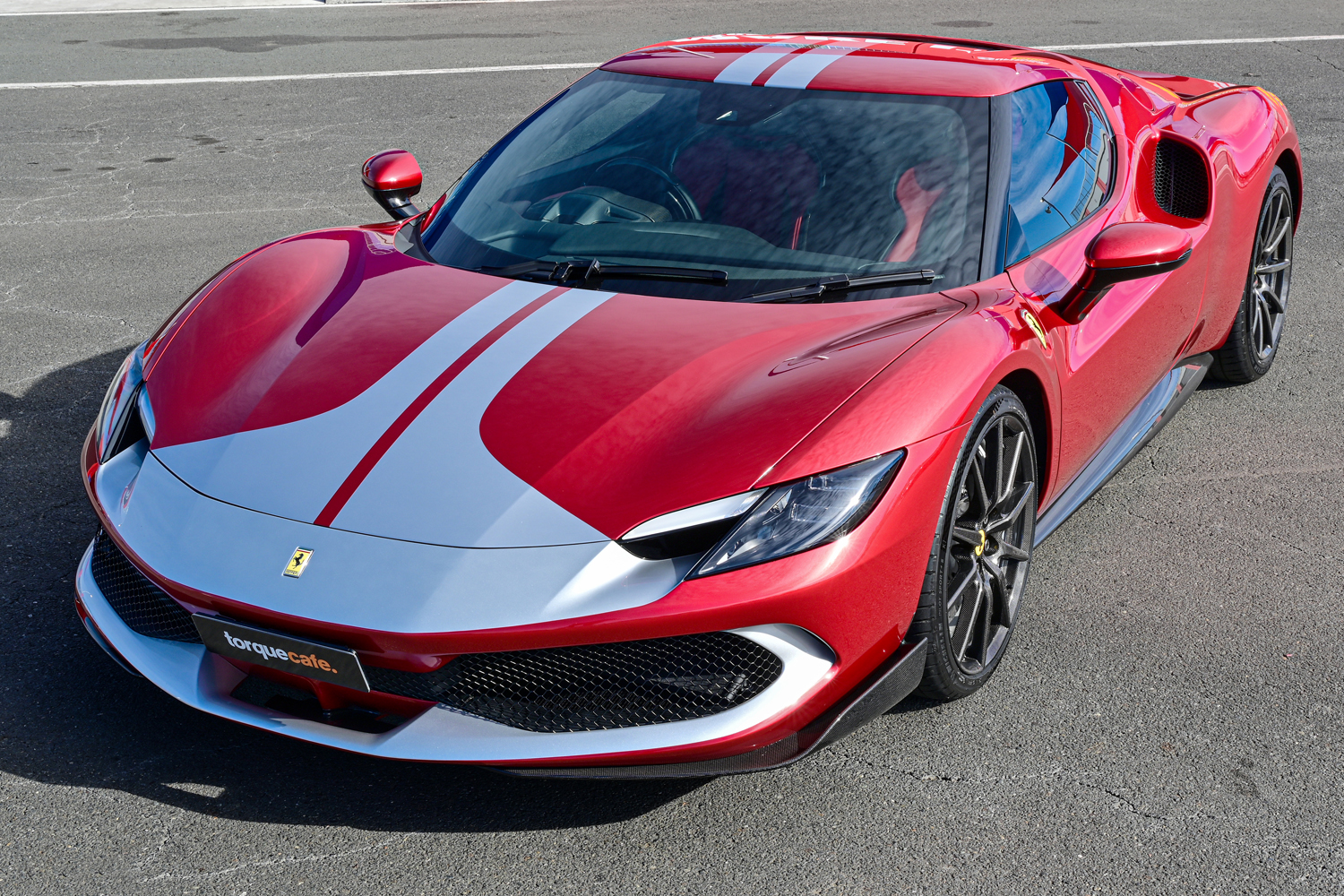
What: Ferrari’s new era supercar
Where: Queensland Raceway, Queensland
Conditions: Dry, sunny
What is it?
This is the Ferrari for the next era in high-performance motoring, a hybrid supercar that will lead the brand into its electric future. Whereas once the brand was defined by its simplicity – big, powerful engines mated to a simple chassis – this is anything but that.
READ MORE: Why the Ferrari 296 GTB will redefine the brand
While Ferrari has built hybrid vehicles before, they have been the range-topping hero models – LaFerrari and SF90 – whereas the 296 GTB is the would-be ‘entry-level’ model in the range. The car it effectively replaces is the F8 Tributo, which could clearly trace its mid-mounted V8 lineage back to the 308 of the late 1970s.
The 296 is a fresh start, pairing a new turbocharged V6 engine with an electric motor to create something different, but still quintessentially a Ferrari.
Why does it deserve a track test?
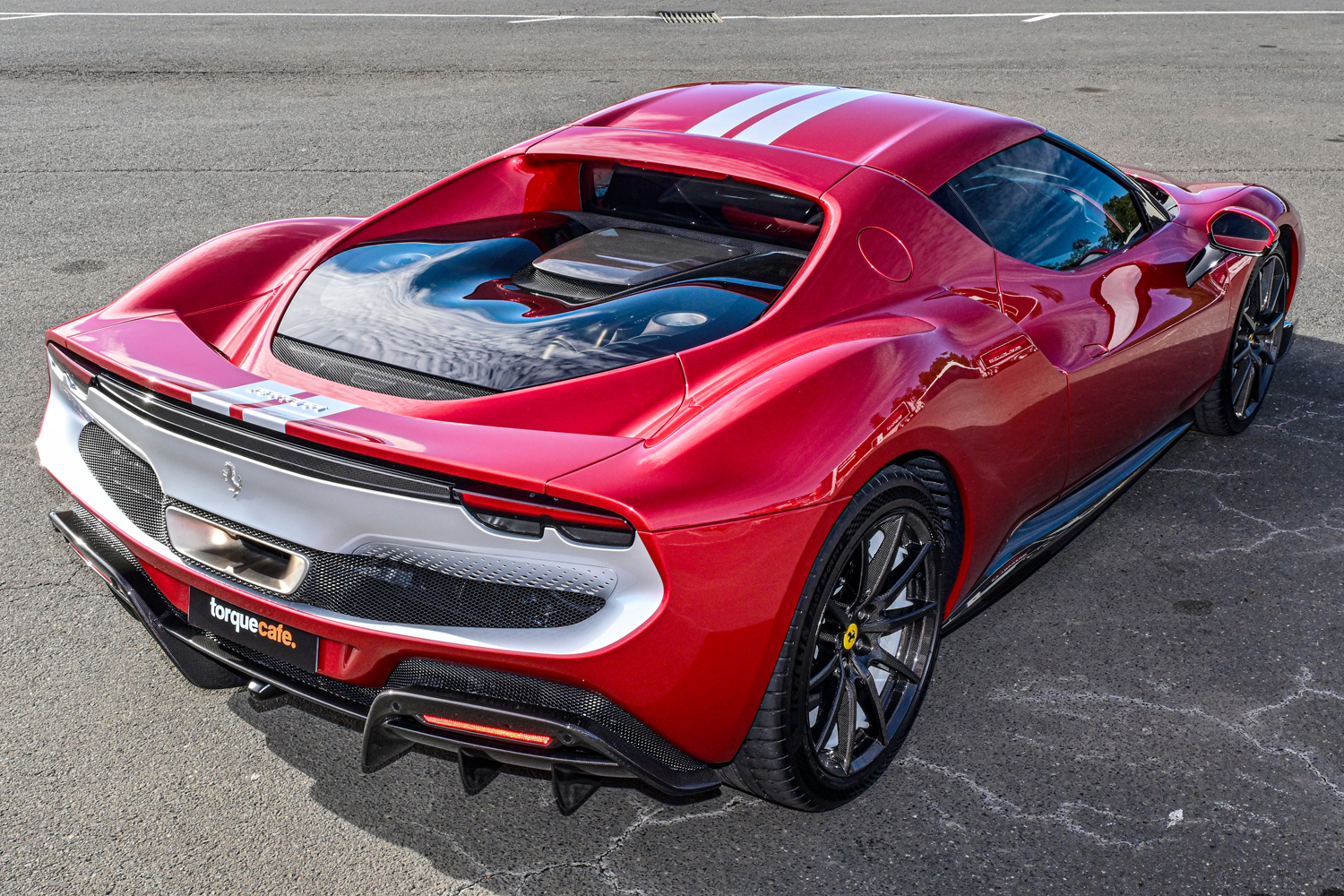
Because it’s a Ferrari. By its very nature, the history and legacy of a brand that began life as a racing team, the 296 GTB belongs on track. Yes, it’s a road car, but every Ferrari should feel at home when it’s unbridled on a racetrack.
We recently had the opportunity to test the 296 GTB at Queensland Raceway as part of our first Torquecafe Mega Test, running it under clear skies and sunny conditions.
What’s it like inside?
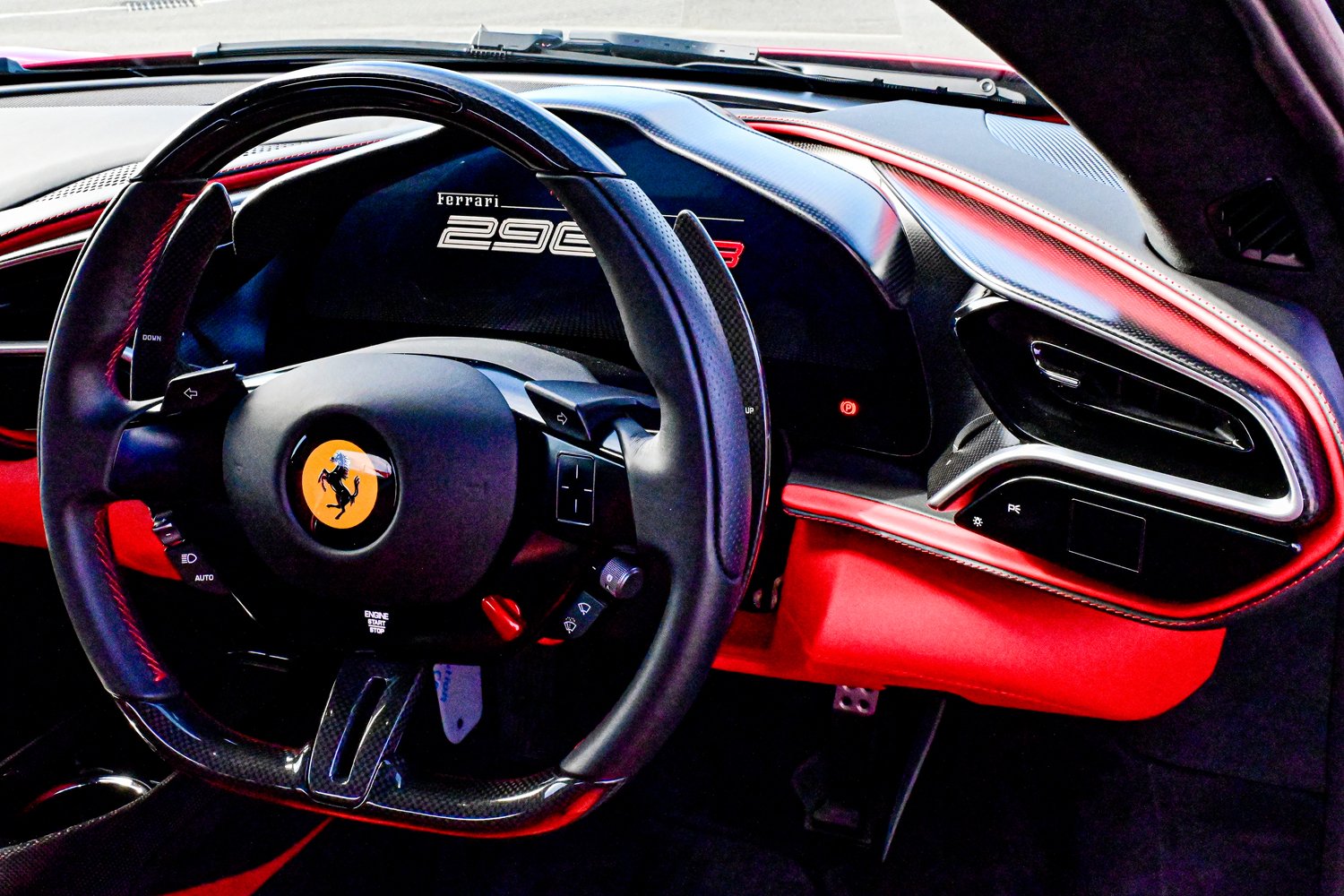
The 296 GTB feels very different to any Ferrari as soon as you climb aboard. Any hint of analogue controls have been removed as Ferrari embraces the digital age.
Even the starter button is digital now, with a small touchscreen built into the lower portion of the steering wheel hub. Even if you’ve owned Ferraris or other supercars in the past, it will take some time to truly get your head around the 296 because it is such a leap-ahead of where the industry has been previously.
Iconic Ferrari elements, like the famous analogue tachometer have been given a 21st century upgrade, replaced by a high-resolution screen that recreates the tacho digitally.
Ferrari’s famous ‘manettino’ switch has become digital too, there’s still an actual physical switch, but each function is displayed on the screen.
As for the rest of the interior, our test car was fitted with optional carbon fibre seats, which were comfortable but quite noisy. Because the 296 begins in electric mode, there’s no loud internal combustion engine to drown out the creaking and rubbing of carbon fibre at low speeds. It’s only when you get on track and fire up the V6 that the issue fades into the background.
Overall it’s an impressive and purposeful interior, one that manages to simultaneously evolve elements from Ferrari’s past while embracing a new digital future.
How’s it go down the straights?
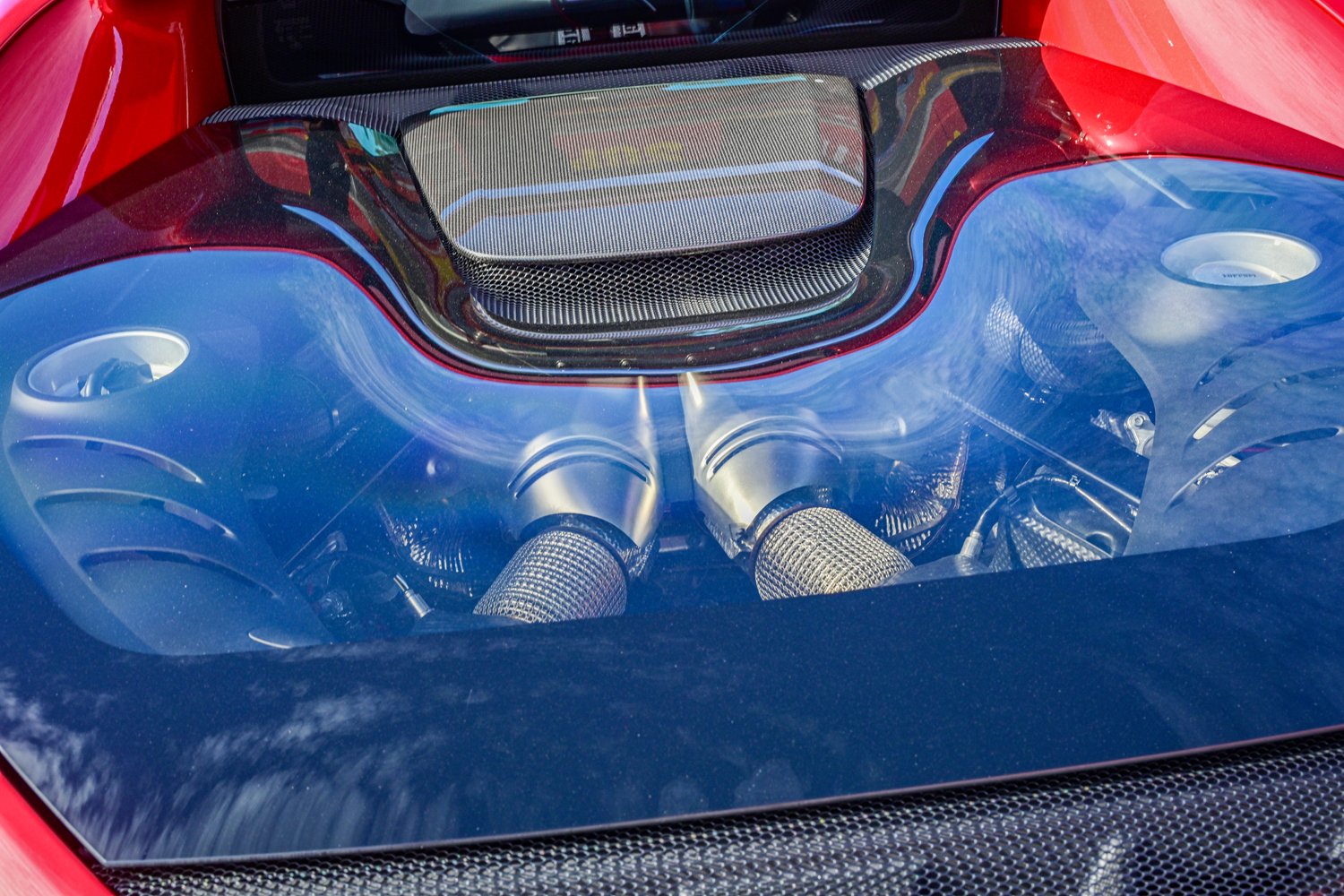
The initial driving experience of the 296 GTB is the surreal moment when this Ferrari quietly moves forward without any engine noise. The electric motor takes us out of the pitlane (it can drive on electric power for up to 25km), it’s only when we get on track and squeeze the throttle hard that the petrol engine barks into life and adds its prodigious performance to the mix.
It may be missing a few cylinders compared to what Ferrari buyers are accustomed to (it’s Ferrar’s first production V6 since the 1960s) but that doesn’t mean it’s under-powered. On the contrary, the 2.9-litre twin-turbo V6 makes an impressive 487kW of power on its own, but when you add in the 122kW electric motor the total system output from this hybrid powertrain is a whopping 610kW and 740Nm of torque.
That’s more performance than the twin-turbo V8 in the F8 Tributo can manage, proving that there is a replacement for displacement after all.
Ferrari claims the 296 GTB will run 0-100km/h in just 2.9 seconds and keep going to a top speed of 330km/h. While we didn’t run any of our own times, even those bold claims feel totally achievable.
This ‘V6 hybrid’ and the chances are you don’t imagine the kind of performance the 296 manages. Coming onto the main straight at QR the car feels like you’ve hit the afterburners in a fighter jet. It just rockets out of the corner and keeps pulling hard all the way to the other end of the straight – or whenever you run out of bravery.
You find yourself pulling gears through the eight-speed dual-clutch transmission at a rapid rate as the speed just keeps coming and coming any time you can straighten up and power down.
What’s it like in the bends?
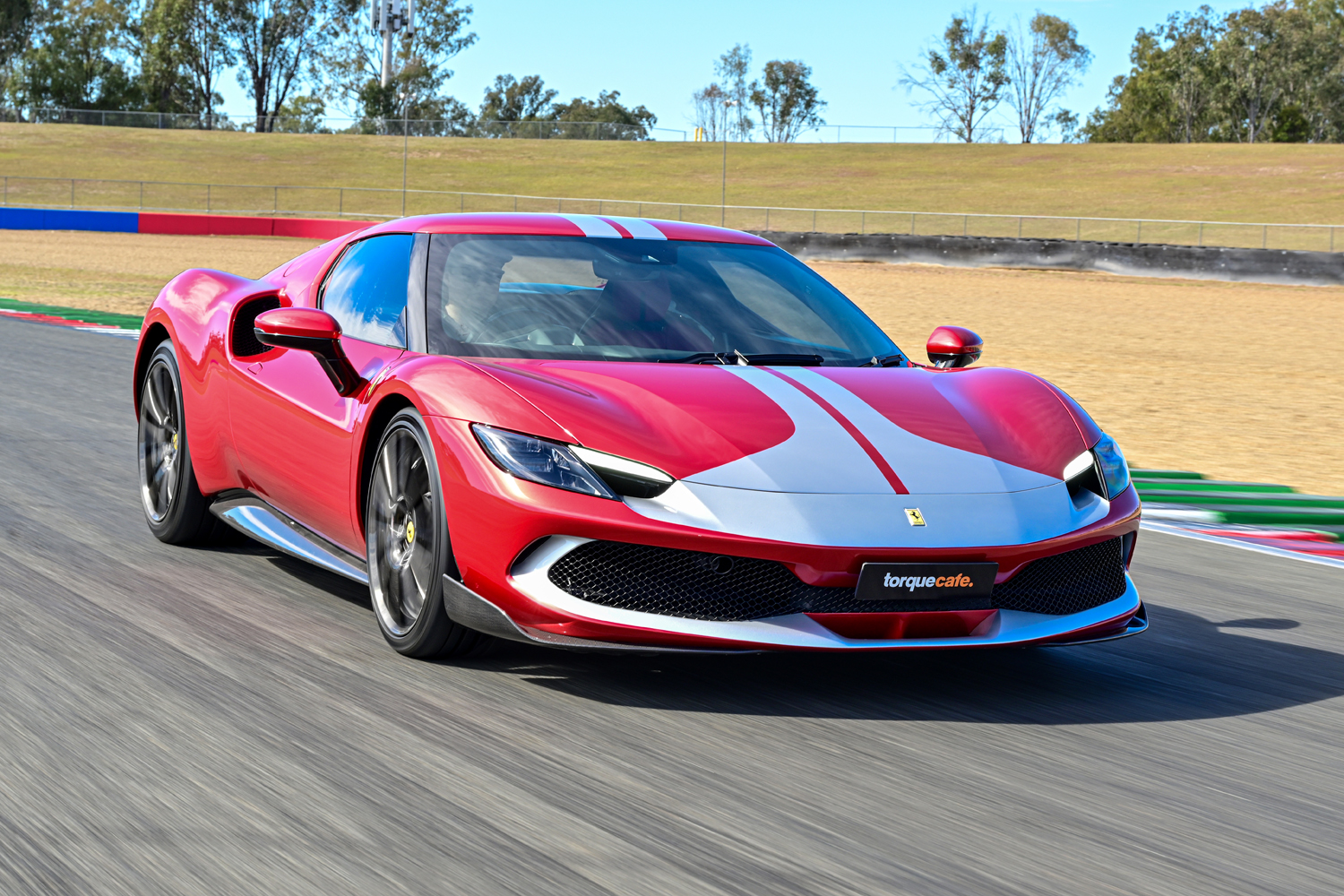
Queensland Raceway may not be the longest or most technical track in the country, but we were able to use the twister layout that takes a hard right at the exit of turn two and then has a pair of switchbacks on the run to the final pair of corners.
It means that we were able to get a good sample of what the 296 GTB is capable of dynamically.
And, once again, it doesn’t feel like any Ferrari we’ve driven before, because previous time in the likes of the F8 Tributo and F12 Berlinetta indicated Ferrari tuned very ‘pointy’ cars with what felt like a ‘heavy’ front end. In contrast, there’s a lightness to the 296 GTB, even with its extra hybrid elements, that gives it a unique driving experience.
But don’t mistake lightness for vagueness, because the 296 turns with precision and immediacy that few other sports cars in the world can match. The steering reacts to your every input, making you feel totally connected as the driver.
The brakes are strong and provide plenty of bite, and perhaps just as importantly, there’s good pedal feel despite the brakes harvesting energy for the battery.
Is it a front-runner or backmarker?
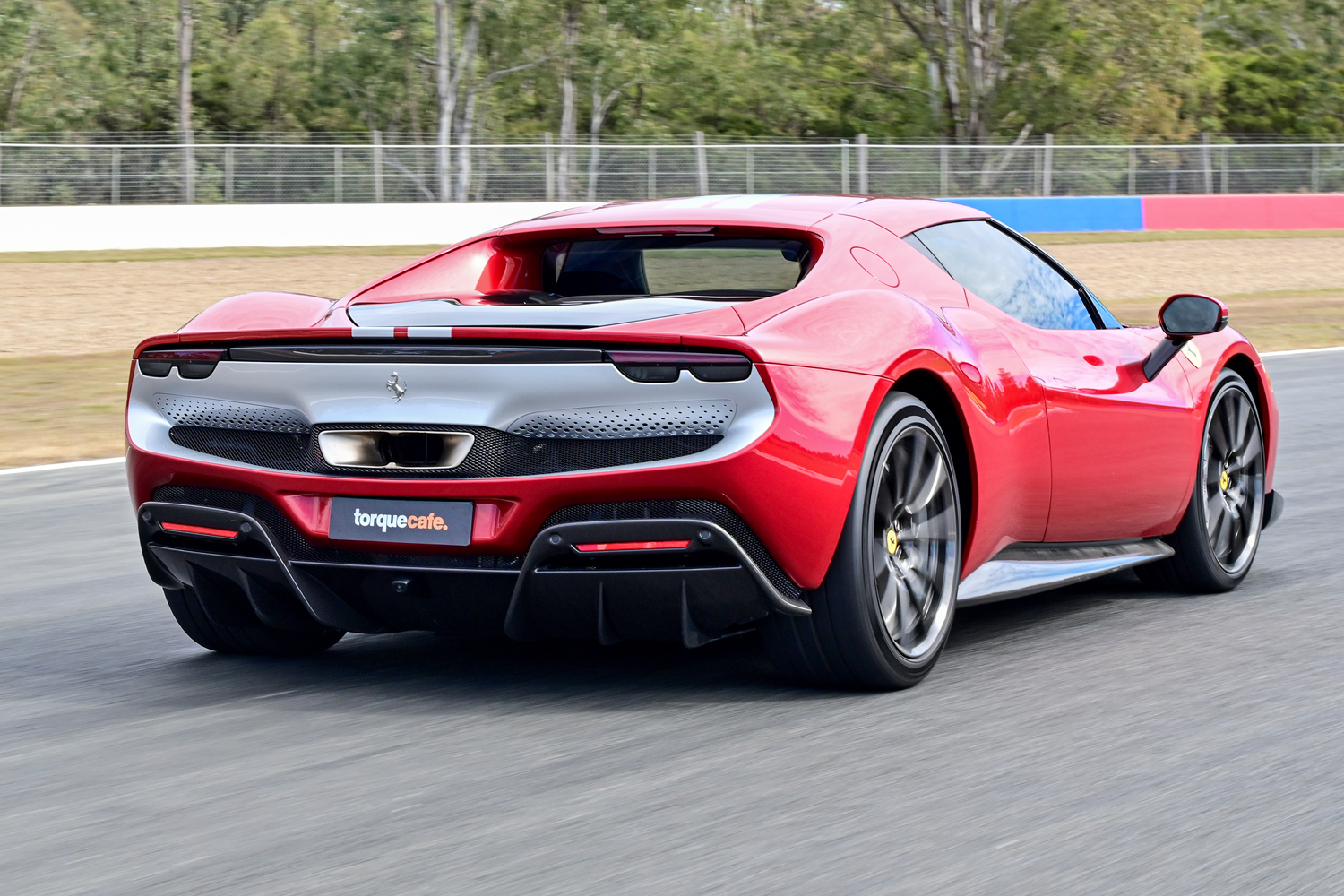
The 296 GTB is the kind of car that will upset some traditional Ferrari buyers, they won’t like the reliance on technology and the digitisation. But it’s hard to argue against progress.
This is undoubtedly a superior car to the F8 Tributo it replaces, more powerful, more precise and ready for the new world order when electrification is a must. Most important of all though, is this is a Ferrari that feels perfectly at home on the racetrack.


















